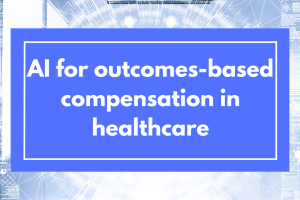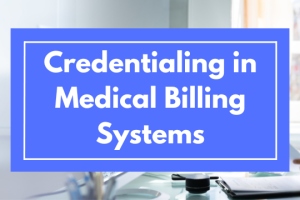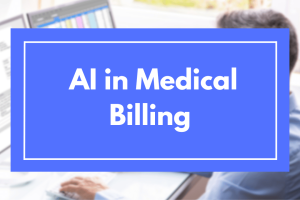Medical billing complexity and massive volumes of daily claims render manual claims processes incapable of protecting both the provider and the payer from underpayments, overpayments, and billing compliance violations. Straight-Through Billing (STB) addresses complexity and volume processing problems by automating the majority of the claim flow and focusing the billing follow-up specialists on exceptions only. An STB process flags problems, routes them for follow-up, and enables online correction and resubmission. The STB methodology implements billing service transparency and focuses management on strategic process improvement opportunities.
Straight-Through Billing integrates the billing process into the practice management workflow, automates the vast majority of transactions, focuses manual labor on exceptions, and establishes a process for continuous improvement.
| Remember: Straight-Through Billing offers a comprehensive approach to improving the billing process, integrating various components, and promoting continuous improvement. |
Practice Management Integration
First, integrated practice management and billing workflow connects patient scheduling, medical record management, and billing into a single process. Every participant in the practice management workflow receives a unified and coherent picture of the practice workload, patient and provider location, resource availability, and cash flow. However, integrated with Electronic Health Records, practice management systems are more beneficial.
Electronic health records (EHR) are digital formats of a patient’s chart. They contain all the information about a patient’s health. This includes medical history, allergies, immunizations, previous treatments, medication history, past diagnoses, history of substance abuse (if any), and so forth (Shah, 2021).
Transaction Automation
Transaction automation streamlines and expedites the billing process by automating claim validation, payer message reconciliation, and billing workflow management:
- Automated claim validation eliminates errors downstream and reduces processing time because it flags errors before submitting the claim to the payer.
- Automated claim message reconciliation eliminates the costly search for the original claim and standardizes message communication, eliminating the need to decipher the (often cryptic) payer’s message.
- Automated billing workflow management drives the follow-up discipline required for the resolution of claim denial and underpayment incidents, and it establishes a high degree of process transparency for all billing process participants, resulting in full and timely payments.
- Automated billing increases the net collection rate due to quick claim turnaround and efficient follow-up. Respond to your denials within 5-21 business days of receiving them, using our Daily Denial Email Alerts (Qureshi, 2022).
Focus on Exceptions
Focusing manual labor on exceptions requires timely exception identification, routing to follow-up personnel, online error correction, and rigorous follow-up tracking. Again, process transparency enables tracking exception follow-up as implemented in ClinicMind-like systems.
Another significant benefit of automated medical billing is the ability to track and analyze financial data. With this, healthcare facilities can monitor their revenue cycles, identify growth opportunities, and generate detailed financial reports (Polo, 2023).
Continuous Process Improvement
Finally, a process for continuous improvement requires continuous observability of every process attribute and a modification methodology for both automated claim processing and manual exception follow-up tracking.
Straight-Through Billing implements billing transparency by design because billing transparency is an integral attribute of every component of the STB process.
It also enables businesses to streamline their billing operations, reduce errors, enhance efficiencies, and improve the customer experience (Ward, 2023).
Straight-Through Billing Architecture
The Straight-Through Billing systems architecture mirrors the architecture of general Straight-Through Processing (STP) systems developed for the financial services industry. Such systems require effective workflow management, a knowledge-based validation system, connectivity to all process participants (including online data reconciliation), and tracking of problem resolution. Therefore, a typical ClinicMind-like STB system has a three-tiered architecture:
- Back-end processing engine, designed for a high-volume transaction processing environment
- Middle tier, using Java Servlet technology
- Front end, using an HTML-JavaScript, zero-footprint client
| Did You Know? The STB architecture is inspired by the systems used in the financial services industry, showcasing the transferability of advanced processing concepts across different domains. |
An STB system (e.g., ClinicMind) based on the methodology outlined here implements rich functionality, which allows the following to be automated:
- Computer-aided preferential patient scheduling
- Integrated electronic medical records
- Online computer-aided coding
- Real-time claim validation and patient eligibility testing
- Electronic claim submission
- Payment posting, reconciliation, and verification of meeting contractual obligations
- Monitoring of audit risk and billing compliance
- Tracking of denial appeal process
Quantitative STB Management
Straight-Through Billing methodology allows for quantitative management since the likelihood of the entire process failing can be estimated as the product of such items for each individual workflow step. A ClinicMind-like STB system tracks the percentage of clean claims (claims paid in full, and within the allocated time frame, without any manual intervention) and focuses the management on those process aspects that yield the greatest potential improvement. Thus, STB methodology focuses on exceptions at both the tactical and strategic management levels and can help to improve cash flow and reduce outstanding invoices by providing real-time visibility into billing and payment status (Mielnicki, 2022).
Modern Insights and Research
In the ever-evolving field of medical billing, staying ahead of the curve is crucial for achieving financial excellence in the healthcare industry. Let’s embark on an exhilarating journey into the future of medical billing, where the convergence of electronic health records (EHRs), artificial intelligence (AI), real-time analytics, and collaborative efforts reshapes the revenue cycle landscape. Brace yourself for a transformative exploration that revolutionizes processes, enhances data accuracy, maximizes financial outcomes, and ushers in an era of unparalleled efficiency and effectiveness in the dynamic realm of medical billing.
1- Role of Blockchain Technology in Billing Systems
The seamless integration of electronic health records (EHRs) and billing systems is revolutionizing the field of medical billing. Gone are the days of fragmented medical records scattered across various healthcare organizations. With blockchain at the helm, a distributed EHR ecosystem emerges, ensuring a smooth flow of information between providers. By eliminating manual data entry and ensuring accurate documentation, this innovative technology guarantees accurate and secure documentation, eliminating errors and speeding up reimbursement processes (Cerchione et al., 2022).
But that’s not all. Blockchain brings an unparalleled level of data integrity and security, employing cryptographic techniques to safeguard patient information from prying eyes. Rest easy, knowing that your sensitive data is protected within an unalterable digital fortress.
But the wonders of blockchain don’t stop there. Brace yourself for the fusion of blockchain with sensor networks and EHRs. This powerful combination paves the way for enhanced patient tracking and personalized care. Imagine a healthcare experience tailored to your unique needs, supported by accurate and aggregated data from multiple sources. It’s a game-changer, empowering healthcare providers to deliver the highest standard of care with precision and compassion.
2- The Role of Artificial Intelligence in Medical Billing’
Artificial intelligence (AI) is at the forefront of the technological revolution in medical billing. AI-powered algorithms analyze historical data to identify coding errors, flag missing documentation, and optimize billing codes for maximum reimbursement. With its ability to learn and adapt, AI becomes a valuable partner in revenue cycle management, automating routine tasks and freeing up valuable resources. Integrating AI into medical billing processes drives efficiency, accuracy, and financial success (Kalinin, 2023). Let’s dive into the realm of AI-assisted medical billing!
- Data Recognition
AI can effectively recognize and parse various types of data relevant to medical billing, including insurance cards, health records, and other digitally captured texts. Natural language processing (NLP) techniques and neural networks are used to extract and interpret information from these documents.
- Insurance Eligibility and Claims Submission
AI assists in validating patient insurance eligibility by analyzing insurance cards and other relevant data. It can automate the process of claims submission, ensuring that the necessary information is accurately recorded and transmitted to insurance payers.
- Claims Tracking and Risk Assessment
AI algorithms can track the progress of submitted claims and assess the risk of claim rejection. By analyzing historical data and patterns, AI can predict potential issues and identify “risky” claims before they are submitted. This enables billers to take proactive measures to address any discrepancies or missing information, improving the chances of successful claims processing.
- Prioritizing Billing Tasks
AI can assist billers by prioritizing their tasks based on their impact on the bottom line. AI algorithms can allocate resources and prioritize tasks by analyzing the financial implications of different billing activities.
- Voice Input and Automation
As an experimental feature, AI can enable billers to input data using voice recognition technology. This can further streamline the billing process and reduce manual data entry efforts. Voice input can enhance efficiency and accuracy while minimizing the potential for errors.
3- Enhancing Patient Engagement through Self-Service Portals
Patient engagement is a game-changer in medical billing. Modern research highlights the transformative impact of self-service portals in empowering patients and streamlining the billing process. Through these portals, patients gain access to their billing information, payment options, and direct communication with billing staff. This transparency and convenience reduce administrative burdens, enhance patient satisfaction, and contribute to improved revenue collection efficiency by fostering a better understanding of bills, encouraging prompt addressal of concerns, and reducing unpaid bills. Here are the essential features of patient portals (Desai, 2023):
- Secure Access to Personal Health Records
Patients can access their medical history, treatment plans, lab results, and more through the patient portal. This empowers patients to make informed decisions about their treatment while ensuring the protection of their personal health information in compliance with HIPAA regulations.
- Online Appointment Scheduling
The convenience of online appointment scheduling allows patients to plan, reschedule, or cancel appointments with healthcare providers. By optimizing appointment scheduling based on provider availability, patient preferences, and urgency of care, patient portals enhance efficiency, reduce administrative demands, and improve patient satisfaction.
- Access to Test Results and Medical History
Patient portals provide easy access to test results, such as blood tests and imaging studies, enabling patients to stay informed about their health status and engage in meaningful conversations with healthcare professionals. Comprehensive medical history records further facilitate care coordination across providers, enhancing patient involvement and outcomes.
- Secure Messaging between Patient and Provider
Secure messaging functionality enables confidential and compliant communication between patients and healthcare providers. Patients can discuss treatment plans, address concerns, and seek clarification, fostering trust and efficient information exchange within the patient portal’s secure environment.
- Billing and Insurance Information Management
Patient portals simplify the management of billing and insurance-related tasks. Patients can access and pay medical bills, update insurance information, and track claim progress, ensuring transparency and organization in healthcare financial obligations.
4- Real-time Analytics and Performance Monitoring for Strategic Decision-Making
Real-time analytics and performance monitoring play a crucial role in strategic decision-making in the medical billing space. These tools enable healthcare organizations to gain a comprehensive view of their revenue cycle, identify bottlenecks, and uncover areas for improvement. By leveraging real-time analytics, organizations can proactively respond to changing reimbursement patterns, denials, and revenue collection strategies. Continuously monitoring and analyzing data also ensures compliance with regulatory requirements, reducing the risk of audits and penalties (Mohamed, 2020).
To enhance decision-making and performance measurement, healthcare organizations are adopting emerging technologies such as big data. By aggregating structured, semi-structured, and unstructured data from various sources like Electronic Medical Records (EMRs), scheduling systems, billing systems, and wearable devices, organizations can achieve data completeness and improve healthcare systems.
5- Collaboration with Payers and Clearinghouses for Optimal Billing Performance
Collaboration between healthcare providers, payers, and clearinghouses is crucial for optimizing the medical billing process and improving revenue cycle performance. Recent research highlights the importance of forging strong partnerships to streamline transactions and maximize revenue. By understanding payer requirements and aligning billing processes, healthcare providers can enhance claim processing, reduce rejections, and expedite reimbursement. Collaboration drives success by ensuring a seamless flow of information and fostering valuable relationships.
References
- Cerchione, R., Centobelli, P., Riccio, E., Abbate, S., & Oropallo, E. (2022). Blockchain’s coming to hospital to digitalize healthcare services: Designing a distributed electronic health record ecosystem. Technovation, 120, 102480. https://doi.org/10.1016/j.technovation.2022.102480
- Desai, D. (2023, April 17). Increasing Patient Engagement Through the Use of Modern Patient Portals [Review of Increasing Patient Engagement Through the Use of Modern Patient Portals]. Heuristic HealthTech; LinkedIn. https://www.linkedin.com/pulse/increasing-patient-engagement-through-use-modern-portals-dhaval-desai/ (accessed Jun. 07, 2023).
- Kalinin, K. (2023, February 21). The Benefits of Automated Medical Billing [Review of The Benefits of Automated Medical Billing]. Top FLight Apps; https://topflightapps.com/ideas/ai-in-medical-billing-and-coding/ (accessed Jun. 08, 2023).
- Mielnicki, K. (2022, August 15). How (and Why) Should You Build an Automated Medical Billing System? Flobotics – Robotic Process Automation Consulting and Development. https://flobotics.io/blog/healthcare/how-build-automated-medical-billing-system (accessed Jun. 08, 2023).
- Mohamed, A. (2020). Framework of Big Data Analytics in Real Time for Healthcare Enterprise Performance Measurements. STARS. https://stars.library.ucf.edu/etd2020/902 (accessed Jun. 07, 2023).
- Polo, M. (2023, February 6). The Benefits of Automated Medical Billing. NCDS. https://www.ncdsinc.com/the-benefits-of-automated-medical-billing/?utm_source=rss&utm_medium=rss&utm_campaign=the-benefits-of-automated-medical-billing (accessed Jun. 07, 2023).
- Quershi, H. (2022, February 24). What is Medical Billing Automation? Right Medical Billing. https://rightmedicalbilling.com/blog/medical-billing-automation-quickly-turn-claims-into-cash (accessed Jun. 07, 2023).
- Shah, R. (2021, November 29). How to Integrate EHR in Practice Management System. Osplabs. https://www.osplabs.com/insights/how-to-integrate-ehr-in-practice-management-system/ (accessed Jun. 07, 2023).
- Ward, A. (2023, May 23). The benefits of automated medical coding. Medical Economics. https://www.medicaleconomics.com/view/the-benefits-of-automated-medical-coding (accessed Jun. 08, 2023).
A Future Book Publication Note
This article is a chapter in the forthcoming 2nd Edition book “Medical Billing Networks and Processes,” authored by Dr. Yuval Lirov and planned for publication in 2024. We will post more chapters on this blog soon.











3 Responses
The breadth of knowledge compiled on this website is astounding. Every article is a well-crafted masterpiece brimming with insights. I’m grateful to have discovered such a rich educational resource. You’ve gained a lifelong fan!
Thank you for your response! I’m grateful for your willingness to engage in discussions. If there’s anything specific you’d like to explore or if you have any questions, please feel free to share them. Whether it’s about emerging trends in technology, recent breakthroughs in science, intriguing literary analyses, or any other topic, I’m here to assist you. Just let me know how I can be of help, and I’ll do my best to provide valuable insights and information!
I don’t think the title of your article matches the content lol. Just kidding, mainly because I had some doubts after reading the article.